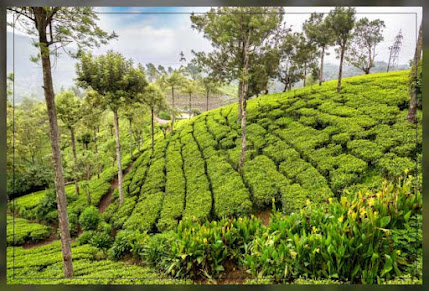Chandan Kumar
FARMINNG
Different Types of Farming in India
1. Subsistence Farming
In India, a lot of farmers engage in subsistence farming primarily to sustain their livelihoods rather than seeking substantial profits from their harvests. Their cultivation is directed toward providing for themselves and their families. These farmers typically work with small land holdings, employing rudimentary farming tools.
Subsistence farming methods typically do not incorporate the use of fertilizers and high-yielding variety (HYV) seeds. Nevertheless, despite their reliance on manual labour, these farmers often have essential amenities such as irrigation and electricity.
This traditional farming approach results in relatively modest yields. The bulk of the produce is consumed by the family, leaving only a minimal surplus available for sale in the market.
2. Intensive and Extensive Farming
From different types of farming in India, Intensive farming entails achieving maximum production within confined land constraints, utilizing every available human and capital resource to its fullest potential. This method enables farmers to cultivate multiple crops annually and demands substantial capital investment and labour input for each piece of land. Typically, intensive farming is practised in densely populated regions of India.
In contrast, extensive farming, often referred to as mechanical farming, represents a more advanced approach characterized by extensive machinery usage. This form of agriculture in India focuses on cultivating a single crop per year, requiring relatively less labour and capital per hectare in comparison to intensive farming.
3. Commercial Farming
It encompasses the extensive cultivation of crops with the primary objective of exporting these products to other nations, thereby bolstering the country's foreign reserves. This method of farming is predominantly practised in regions such as Punjab, Gujarat, and Maharashtra, and Haryana. The principal crops cultivated in these areas include wheat, cotton, sugarcane, and corn. This farming approach employs various techniques, including the use of pesticides, fertilizers, high-yield variety (HYV) seeds, and more, to achieve significant yields.
4. Plantation Farming
This type of farming encompasses the cultivation of extensive areas with bushes or trees. This method places a strong emphasis on capital investment and demands effective management skills, technical expertise, fertilizers, modern machinery, and improved irrigation and transportation infrastructure, among other factors. Typically, plantation farming revolves around the cultivation of single crops such as tea, rubber, coconut, spices, coffee, and fruit crops. These crops yield continuous harvests over many years.
The primary objective of plantation farming is to export its products, emphasizing the marketing prowess of the cultivated crop. This agricultural approach is predominantly practised in regions like Karnataka, Kerala, Assam, and Maharashtra.
5. Dryland Farming
It involves cultivating crops without relying on irrigation systems, primarily in regions with insufficient or low rainfall, typically ranging from 750 mm to 500 mm or even less. In this farming approach, moisture conservation is achieved by cultivating specific drought-resistant crops like gram, bajra, jowar, and peas, which have lower water requirements. Dryland farming is typically practiced in arid regions, including north-western India, western, and central India.






Comments
Post a Comment